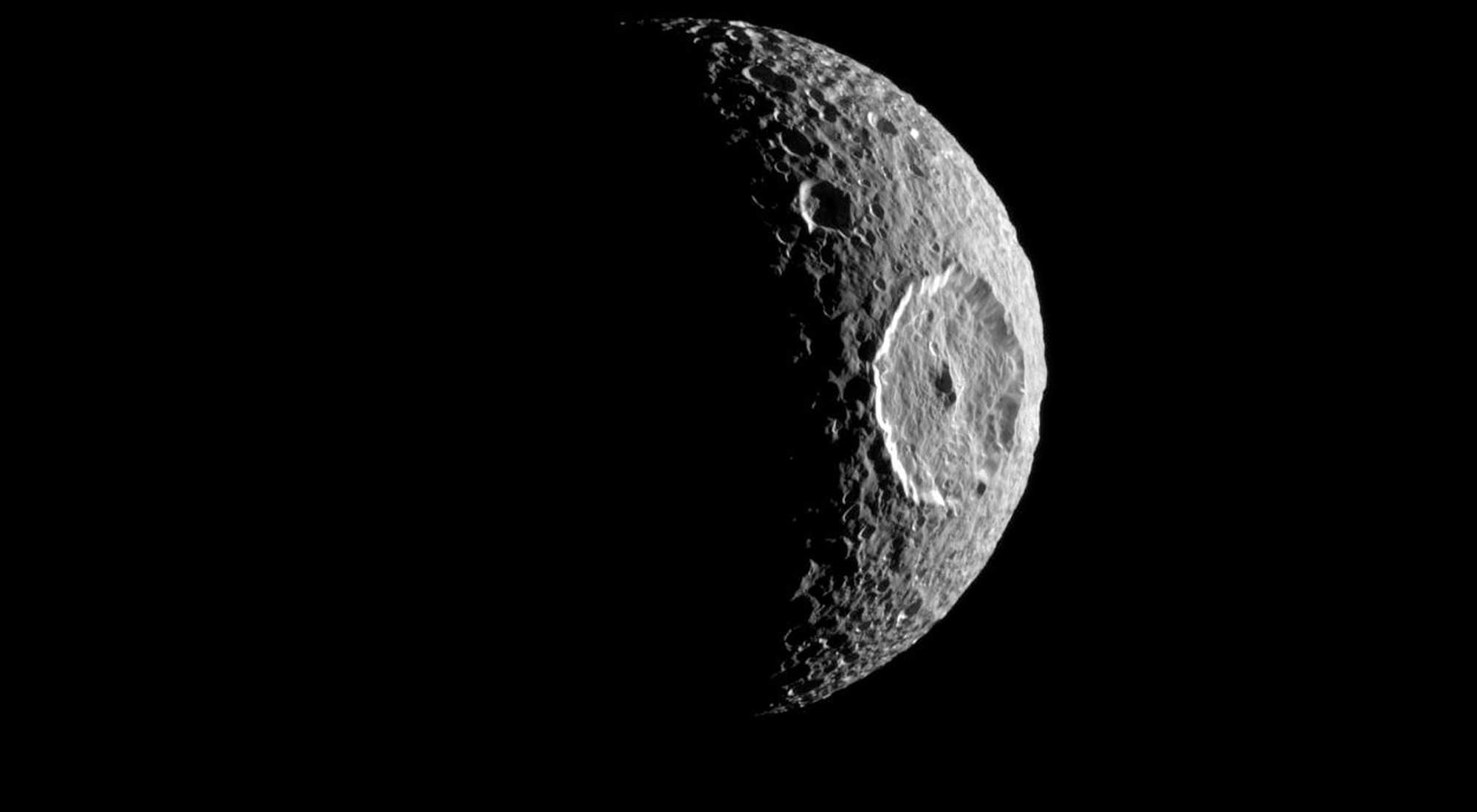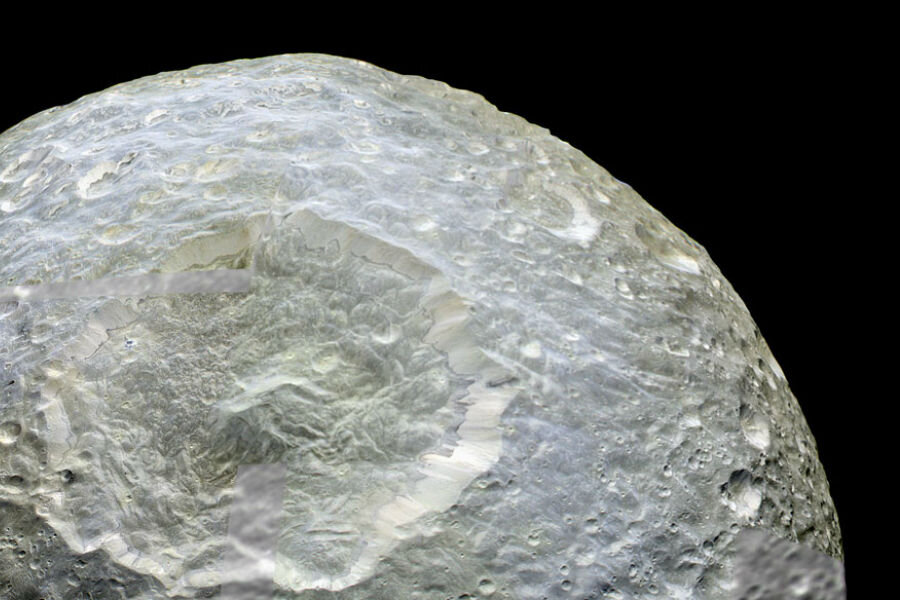The so-called Death Star Moon of Saturn hides many secrets.
There are many strange moons in our solar system, but one of the strangest belongs to Saturn. Discovered in 1789 by William Herschel, Mimas is a truly unique moon in our solar system. With a diameter just shy of 400 kilometers, it is the smallest cosmic body that is spherical because of self-gravitation. Although it was named after one giant in Greek mythology, the moon was dubbed the Death Star moon because of its resemblance to the famous Death Star from Star Wars, a fictional space station and super-weapon from the 1977 movie. Now, scientists have discovered more unique clues about this odd-looking moon.

The Death Star Moon Reveals its Secrets
Simulations of the Herschel impact basin on Mimas (the largest impact crater with a diameter of 130 kilometers across), Saturn’s smallest and inner moon, provide more evidence that it is a world with a liquid ocean inside. To make the discovery, scientists looked at the thickness of the surface sheet of the planet. Simulations showed the Mimas ice sheet must have been at least 55 km thick at the time of the Herschel-forming impact. Instead, observations of Mimas and models of its internal warming limit the current thickness of the ice sheet to less than 30 km, if it currently hosts an ocean. These results imply that a present-day ocean within Mimas must have been warming and expanding since the basin formed. It is also possible that Mimas was completely frozen both at the time of Herschel’s impact and today.

More Evidence Suggests The ‘Death Star’ Moon Hides an Ocean

However, scientists found that including a subterranean ocean in the impact models helped produce the shape of the basin. What scientists found is that the Herschel impact crater could not have formed in an ice sheet of its present thickness without destroying the ice sheet at the impact site. According to the researchers, if the Death Star moon does indeed possess an ocean today, it is likely that the ice sheet on its surface has been reducing in thickness ever since the formation of the impact crater. This could also explain why the odd-looking moon lacks surface fractures like other similar bodies in the solar system. Additionally, if Mimas is an emerging ocean world, then it places important constraints on the formation, evolution, and habitability of all of Saturn’s midsize moons.
Map of Mimas
Source: curiosmos.com








